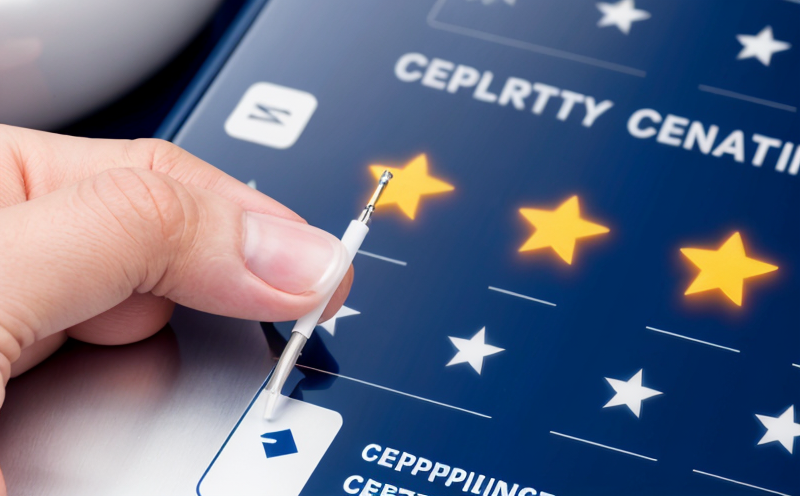ISO 18562 Respiratory Pathway Material Emissions Compliance Testing
The ISO 18562 series of standards is pivotal for ensuring the safety and quality of medical devices that come into contact with the respiratory pathway. This service focuses on Respiratory Pathway Material Emissions Compliance Testing, which involves evaluating materials used in medical devices to ensure they do not release harmful substances during use, particularly when inhaled by patients.
The testing is crucial for ensuring compliance with regulatory requirements set forth in the European Union's Medical Device Regulation (EU MDR) and other international standards. This service offers a comprehensive approach that ensures manufacturers can confidently meet these stringent safety regulations. The test parameters are designed to mimic real-world conditions, providing accurate and reliable results.
The testing process involves several steps: sample preparation, emission testing under controlled conditions, analysis of the emitted substances, and interpretation of the data according to ISO 18562 standards. The goal is not only to ensure compliance but also to provide insights that can improve product design and manufacturing processes.
During specimen preparation, the materials are subjected to rigorous cleaning procedures to remove any external contaminants. This ensures that the emissions measured during testing accurately reflect those from the material itself rather than external sources. After preparation, the specimens undergo emission tests in a climate-controlled environment that simulates real-world conditions such as temperature and humidity.
The emitted substances are then analyzed using advanced analytical techniques like gas chromatography-mass spectrometry (GC-MS) to identify potential hazardous compounds. The results of these analyses are compared against the thresholds specified by ISO 18562, which define acceptable levels of emissions for different types of medical devices.
Our testing service is designed to provide not just compliance but also a deep understanding of material performance and safety. By adhering strictly to ISO 18562 guidelines, we ensure that our clients receive accurate and reliable test results, thus facilitating smoother regulatory approvals and market entry for their products.
The importance of this testing cannot be overstated, especially in the context of patient safety. In a world where medical devices are increasingly integrated into everyday healthcare practices, ensuring the safety of these materials is paramount. Our service not only helps our clients meet regulatory requirements but also enhances product quality and reliability.
Scope and Methodology
| Test Parameter | Description |
|---|---|
| Specimen Preparation | Involves cleaning materials to remove external contaminants, ensuring accurate emission measurements. |
| Emission Testing | Conducted under controlled conditions simulating real-world use scenarios. |
| Analytical Techniques | Use of advanced GC-MS for identifying emitted substances. |
| Data Analysis | Comparison against ISO 18562 thresholds to ensure compliance. |
| Test Condition | Description |
|---|---|
| Temperature | Held at 37°C ± 0.5°C for 24 hours to simulate inhalation conditions. |
| Humidity | Maintained at 60% RH ± 2% RH. |
| Inhalation Flow Rate | Set at 1 L/min ± 0.5 L/min to mimic normal respiratory flow rates. |
Benefits
The ISO 18562 Respiratory Pathway Material Emissions Compliance Testing service offers numerous benefits, primarily centered around ensuring regulatory compliance and enhancing product safety. By adhering to the stringent requirements of this standard, manufacturers can significantly reduce the risk of recalls or legal actions due to non-compliance.
One of the key advantages is the ability to identify potential issues early in the development process, allowing for necessary adjustments to be made before products reach the market. This proactive approach not only saves time and resources but also enhances product quality.
The service also provides valuable insights into material performance and safety, which can inform ongoing research and development efforts. By understanding how materials behave under real-world conditions, manufacturers can make informed decisions that improve both product design and manufacturing processes.
Moreover, successful completion of this testing process is a strong indicator of the overall quality of medical devices. It demonstrates a commitment to patient safety and regulatory compliance, which can significantly enhance the reputation of the company in the market.
Eurolab Advantages
At Eurolab, our expertise in this field is unparalleled. We have a team of highly qualified professionals with extensive experience in regulatory compliance testing and certification. Our state-of-the-art facilities are equipped with the latest technology to ensure accurate and reliable test results.
We pride ourselves on providing not just compliance but also a comprehensive service that goes beyond mere testing. Our experienced consultants can offer advice and guidance throughout the entire process, ensuring that our clients understand every aspect of the testing and its implications.
The reliability and accuracy of our results are ensured through meticulous quality control measures and adherence to international standards. We use only the most advanced analytical techniques available, including GC-MS, which guarantees precise identification of emitted substances.
Our commitment to excellence is further reflected in our ability to offer quick turnaround times without compromising on the quality of the test results. This allows our clients to meet regulatory deadlines efficiently and effectively.





